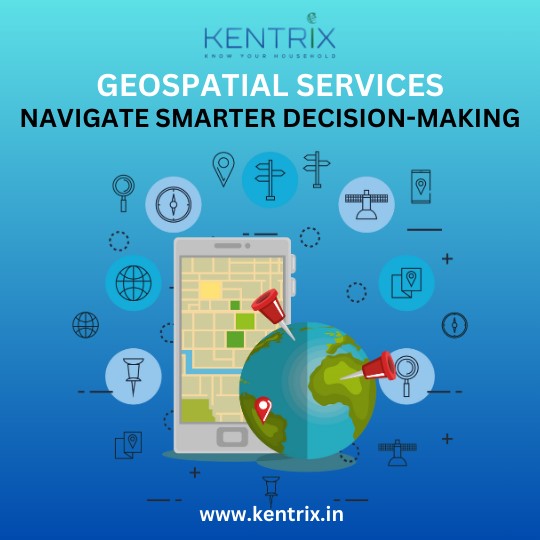In today’s rapidly evolving business environment, data analytics has emerged as an indispensable tool for driving strategic decision-making. Let’s understand how the effective use of data analytics transforms organizations—from optimizing operations and enhancing customer experiences to mitigating risks and uncovering new market opportunities.
In this blog, we explore the power of data analytics, examine its strategic advantages, and highlight how innovative tools from Kentrix can empower businesses to harness the full potential of their data.
Data Analytics: A Strategic Imperative
Data analytics refers to the systematic examination of raw data to derive meaningful insights that drive informed decision-making. By converting vast volumes of data into actionable intelligence, companies can base their strategies on empirical evidence rather than on mere intuition. In the contemporary competitive landscape, data analytics is not just an operational tool; it is a strategic imperative that underpins every facet of business—from marketing and sales to risk management and operational efficiency.
Key Benefits of Data Analytics
- Informed Decision-Making: Real-time data insights allow businesses to swiftly respond to market dynamics and adjust strategies accordingly.
- Enhanced Operational Efficiency: By identifying inefficiencies and optimizing processes, data analytics drives cost reduction and productivity gains.
- Market and Customer Insights: Detailed analysis of consumer behavior and market trends enables businesses to tailor their offerings to meet customer needs.
- Risk Mitigation: Proactive identification of potential risks ensures timely interventions and minimizes financial exposure.
- Competitive Advantage: Organizations that leverage data analytics can innovate faster and adapt more effectively to evolving market conditions.
How Data Analytics Informs Business Decisions
Data analytics plays a crucial role in informing business decisions at every level. Its applications range from predictive modeling, which forecasts future trends, to prescriptive analytics that recommends actionable strategies. Here’s how data analytics is transforming decision-making across various domains:
1. Strategic Planning and Forecasting
Data analytics provides the foundation for strategic planning by forecasting market trends and consumer behavior. Predictive models analyze historical data to forecast future outcomes, enabling businesses to develop proactive strategies. This foresight is critical for resource allocation, budget planning, and market expansion initiatives.
2. Enhancing Customer Experience
By analyzing consumer behavior, preferences, and engagement patterns, data analytics helps companies personalize their offerings. Customized marketing campaigns, product recommendations, and improved customer service are all outcomes of leveraging detailed data insights. In today’s customer-centric market, a personalized approach is key to driving loyalty and retention.
3. Operational Optimization
Data analytics uncovers inefficiencies in processes, supply chains, and resource management. By continuously monitoring key performance indicators (KPIs), companies can streamline operations, reduce waste, and achieve significant cost savings. Real-time dashboards and performance metrics ensure that operational adjustments are made promptly, thus maintaining a competitive edge.
4. Risk Assessment and Management
In an era of increasing uncertainty, robust risk management strategies are essential. Data analytics enables organizations to identify potential risks—such as supply chain disruptions, market volatility, or cybersecurity threats—before they escalate. Early risk detection and comprehensive analysis help in formulating mitigation plans that protect business interests and ensure sustainability.
Leveraging Kentrix Tools for Data Analytics Excellence
Kentrix offers a suite of advanced data analytics solutions designed to empower businesses in making data-driven decisions. The platform provides specialized tools that transform raw data into strategic insights. Let’s examine the key tools offered by Kentrix and how they contribute to effective business decision-making:
1. Karma: Deep Consumer Profiling and Financial Analysis
Features:
- Advanced Consumer Profiling: Karma leverages sophisticated algorithms to analyze consumer spending patterns, income levels, and lifestyle affinities.
- Risk Identification: The tool identifies potential customer risks by evaluating financial behavior, which is crucial for creditworthiness assessments.
- Targeted Marketing Support: By understanding customer-product affinities, Karma enables businesses to design targeted upsell and cross-sell campaigns.
Benefits:
- Precision in Marketing: Enhanced consumer profiling ensures that marketing efforts are directed toward high-value segments, improving conversion rates.
- Cost Efficiency: Optimized marketing campaigns reduce wasted expenditure and boost ROI.
- Risk Mitigation: Early identification of credit risks supports sound financial decision-making, safeguarding business interests.
2. Geomarketeer: Location Intelligence for Strategic Expansion
Features:
- Micro-Market Analysis: Geomarketeer uses geospatial data, including demographic and socio-economic information, to identify optimal locations for new stores or service centers.
- Footfall and Traffic Analysis: The tool estimates potential customer traffic in specific areas, aiding in supply chain and operational planning.
- Strategic Expansion Support: Detailed location intelligence helps businesses scale operations by targeting high-potential regions.
Benefits:
- Data-Driven Site Selection: Informed decisions about store locations and market expansion lead to improved revenue generation.
- Enhanced Operational Efficiency: Understanding regional consumer behavior allows for more accurate demand forecasting and inventory management.
- Competitive Edge: Businesses can outperform competitors by capitalizing on data-backed market insights.
3. Segura: Financial Behavior Analysis and Risk Management
Features:
- Comprehensive Risk Profiling: Segura analyzes financial behavior data to detect early signs of potential payment defaults and credit risks.
- Regulatory Compliance: The tool ensures adherence to financial regulations by providing detailed risk assessments and reporting.
- Actionable Insights: Businesses receive proactive recommendations to mitigate identified risks, supporting robust risk management frameworks.
Benefits:
- Proactive Risk Management: Early detection of financial risks allows for timely interventions, reducing potential losses.
- Enhanced Customer Trust: Reliable risk assessments contribute to a stronger, more trustworthy financial profile, crucial for long-term customer relationships.
- Operational Resilience: Comprehensive risk analysis ensures that financial decision-making is both data-driven and compliant with regulatory standards.
4. Persona 360: Holistic Consumer Insights for Hyper-Personalization
Features:
- Integrated Consumer Profiling: Persona 360 aggregates data from over 80 touchpoints to create detailed consumer profiles that include lifestyle, spending habits, and demographic information.
- Advanced Segmentation: The tool allows businesses to segment their audience precisely, facilitating hyper-personalized marketing strategies.
- Real-Time Analytics: With continuous data updates, Persona 360 provides insights into evolving consumer behaviors, ensuring that marketing strategies remain relevant.
Benefits:
- Personalized Marketing: Businesses can tailor their offerings to meet the specific needs and preferences of individual consumer segments, enhancing engagement.
- Improved ROI: Targeted campaigns based on detailed consumer profiles result in higher conversion rates and better return on marketing investments.
- Strategic Agility: Real-time insights enable rapid adjustments to marketing strategies, keeping businesses agile in dynamic markets.
Implementing Data Analytics for Informed Business Decisions
To fully capitalize on the power of data analytics, organizations should adopt a systematic implementation strategy. Here’s a recommended roadmap:
Step 1: Data Consolidation and Integration
Collect data from diverse sources such as CRM systems, sales records, social media, and IoT devices. Integrating this data into a centralized repository ensures a unified view of your business metrics.
Step 2: Data Cleaning and Preparation
Ensure that your data is accurate, consistent, and free from errors. Clean, high-quality data is the cornerstone of reliable analytics and actionable insights.
Step 3: In-Depth Data Analysis
Utilize advanced analytics tools to analyze the data. Statistical models, machine learning algorithms, and visualization tools help uncover trends, correlations, and anomalies that inform strategic decisions.
Step 4: Insight Generation and Visualization
Convert analytical outputs into clear, concise dashboards and reports. Tools like Persona 360 and Geomarketeer provide intuitive visualizations that make it easy to understand complex data sets.
Step 5: Strategy Formulation and Execution
Develop data-driven strategies based on the insights obtained. Whether it’s targeted marketing, operational optimization, or risk management, ensure that decisions are aligned with the insights derived from your data analytics efforts.
Step 6: Continuous Monitoring and Refinement
Data analytics is an ongoing process. Regularly monitor the outcomes of your strategies using real-time dashboards, and refine your approaches based on current data trends.
Also Read: Consumer Behavior Analytics: Unlocking Buying Habits
Conclusion
Data analytics is a powerful driver of business success. By transforming raw data into actionable insights, organizations can make informed decisions that optimize operations, enhance customer experiences, and mitigate risks. The advanced tools offered by Kentrix—Karma, Geomarketeer, Segura, and Persona 360—are at the forefront of this transformation, providing businesses with the comprehensive insights needed to stay competitive in today’s data-centric world.
Investing in robust data analytics solutions not only streamlines decision-making but also paves the way for long-term strategic growth. In an era where every decision counts, leveraging data analytics is the key to unlocking a sustainable competitive advantage. Explore the innovative solutions at kentrix.in and empower your organization to harness the true power of data analytics for informed business decisions.
Embrace the future of decision-making—where data analytics turns raw numbers into strategic gold.









